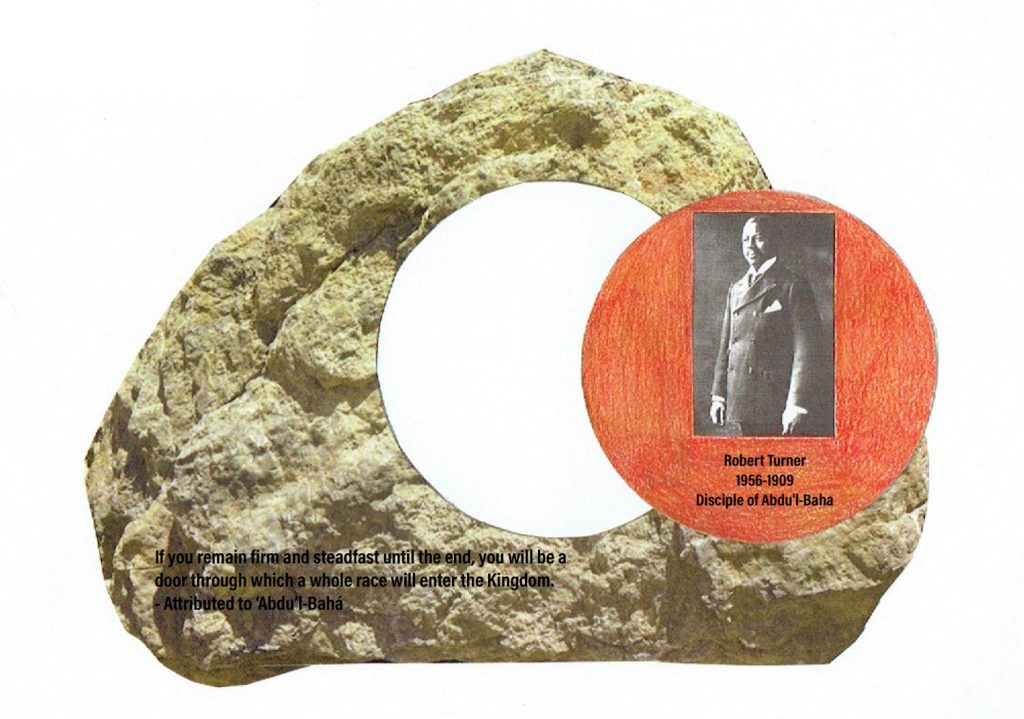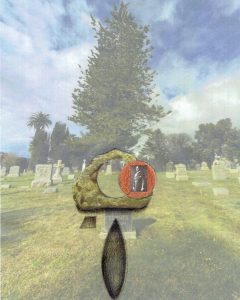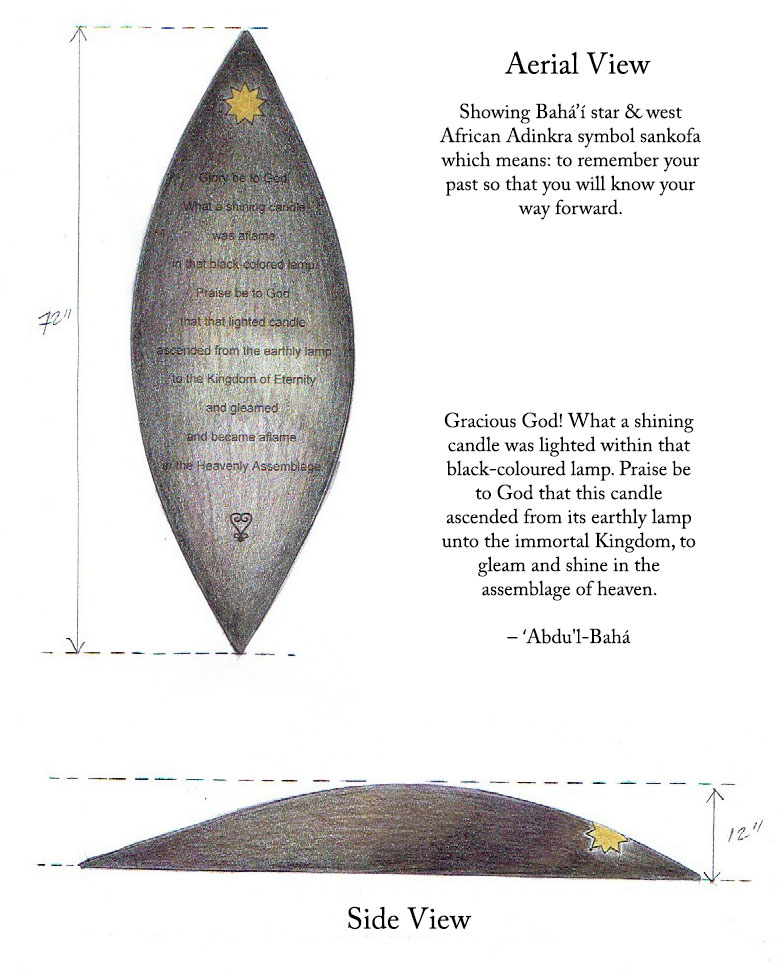In conceiving a reimagining of the Robert Turner gravesite, I drew on three central thematic elements from the life of Mr. Turner – the first African American Baha’i – which link him to the teachings of Bahá’u’lláh, the Prophet and Founder of the Baháʼí Faith. These elements form the conceptual framework for the design process:
- The first was the station of servitude – a social constraint imposed on enslaved Black Americans – one that defined the life of Robert Turner, who was born into slavery in 1856, and subsequently worked as a domestic servant after the Civil War until his death in 1909. This sustained subjugation, maintained via the brutal apparatus of the slavery system and the racist social practices that constrained the ambitions of Black Americans, demanded an affectation of self-deprecation to reinforce the mythology of racial superiority. Mr. Turner was forced to dwell within the absurdity of this perverse reality. The irony is, that in the context of the Baháʼí Faith, the station of servitude is held as the apogee of human achievement, but in this case, it is a choice. Service to humanity, as a central pillar of one’s faith, is a conscious act of volition motivated by love, not by violent coercion. ʻAbdu’l-Bahá, the son of Bahá’u’lláh and His appointed successor, held that “servitude to the entire human race” was His “perpetual religion.” By elevating this humble posture above worldly ambition, ʻAbdu’l-Bahá, who was a contemporary of Mr. Turner’s, asserts a spiritual solidarity with those whose lives have been defined by their service to others, a profound reordering of the social structure, particularly for those forced into slavery’s coffle.
- The second is the spiritual concept of the ‘pupil of the eye,’ a metaphor first introduced by Bahá’u’lláh, who once utilized it to refer to the spiritual insight of Black people. ʻAbdu’l-Bahá used the same metaphor to describe Robert Turner after seeing his photograph prior to welcoming him to the prison city of Akká in Israel during Mr. Turner’s Bahá’í pilgrimage: “Thou art dark in countenance and bright in character. Thou art like unto the pupil of the eye which is dark in color, yet it is the fount of light and the revealer of the contingent world.” This powerful concept, set against the backdrop of an America darkened by the shroud of racial hatred, equates a degraded and demeaned people with the faculty of ‘sight’ essential to the forward progress of humanity. The profound implications of this designation cannot be overlooked in the consideration of the final design.
- Finally, it is said that Mr. Turner was assured by ʻAbdu’l-Bahá that if “he stayed faithful to His cause” he would “be the door through which a whole race would enter the Kingdom.” The transfiguration of Mr. Turner’s corporeal form into a gateway of faith denotes the spiritual significance of his acceptance of the Baháʼí teachings. As the first American believer of his race, he embodies the drop that would become a trickle and then a deluge of African Americans entering the Cause of God. Here again we see the love so characteristic of ʻAbdu’l-Bahá as He illustrates the spiritual destiny of Robert Turner, one that far exceeded the meager opportunities he was afforded in the material world.
Each of these thematic elements have informed the various stages of the design process, from the overall look of the initial drawings to the selection of materials which, to my mind, are essential to capturing the vital force of Mr. Turner’s spirit. I offer this work as a humble gift to the Black American Baháʼí community, to the Baháʼí community at large, and to humanity.




